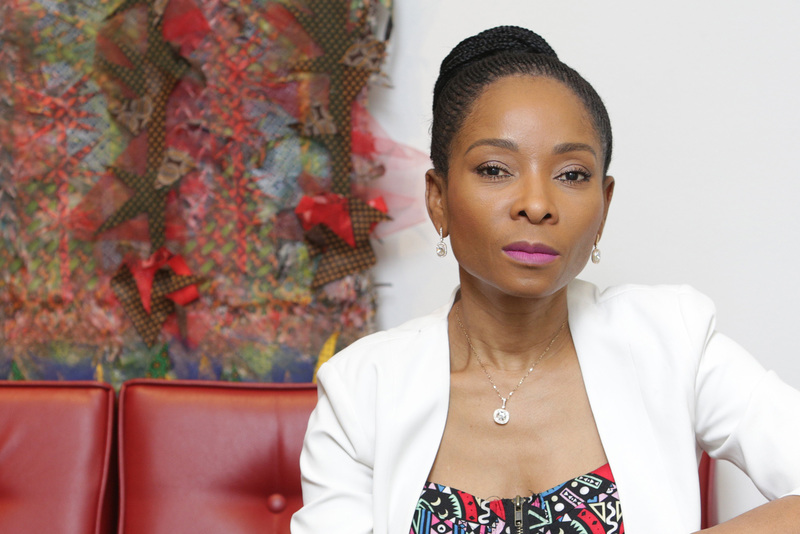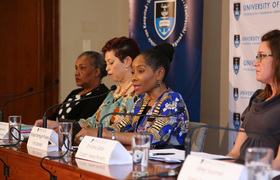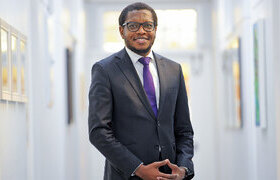Restoring ancestors to their home
11 October 2018 | From Kgethi
Dear students and colleagues
Transforming the University of Cape Town (UCT) is not only about looking ahead to where we want to be, but also about looking back at our history.
An important part of authentic transformation is not only to celebrate our proudest moments – and there are many to truly celebrate – but also to acknowledge the instances where UCT participated in injustice or unfairness. In these instances we need to revisit past injustices, reflect on and learn from them, and seek ways to provide redress where that is possible.
One such instance has been made known to us recently. I am writing to inform you about this shameful chapter in UCT’s history and about the collaborative process we have put in place to make some form of amends for what happened in our university’s past.
As you may know, UCT, like many other universities around the world, has a Human Skeletal Collection that provides long-term safe storage of skeletons. While in the collection, with permission of the correct authorities, they are used in teaching and research. Usually these skeletons come as the result of a bequest – people who donate their bodies for educational purposes, or whose families do so – or as donations from the state.
Sometimes in our surrounding communities’ skeletal remains are uncovered during development or by soil erosion. UCT currently has 1 021 skeletons. These skeletonised remains are used for educational and research purposes in a variety of disciplines, including health sciences.
The donation of human skeletons, whether they be of cadaver or archaeological origin, has always been tightly controlled at UCT, but deeper consideration of the ethical context of our collection has been a focus since the 1980s and research is now controlled by strict protocols.
However, during a recent archiving audit of the collection, Dr Victoria Gibbon from the Department of Human Biology, Division of Clinical Anatomy and Biological Anthropology, discovered that our collection included 11 skeletons that were obtained unethically.
The very limited documentation for these skeletons indicates that these people died in the 19th century. Nine individuals are from a single farm in Sutherland, Northern Cape and appear to have been removed by the owner of the farm in the 1920s and sent to UCT. These Khoisan people had been captured and forced to work as indentured labourers on the farm. (Sadly, this was a common practice in South Africa at the time.)
The records accompanying one of the male skeletons indicates he may have been murdered but there is no other information about the cause of death or who might have committed the alleged murder. There are last names associated with some of these individuals, Stuurman and Abraham families.
There is no evidence that UCT staff did any research with these skeletons, although we cannot confirm that they remained undisturbed in the collection.
As soon Dr Gibbon realised we had these remains a moratorium was immediately placed and UCT began investigating how we could return these skeletons to their place of origin so that they could be laid to rest near their families. The first step, of course, was to try to locate the descendants of these people in Sutherland, which we did with the help of social development consultant Mrs Doreen Februarie of Nosipho Consultancy.
We were able to meet with community members in Sutherland, including local government leaders, traditional and religious leaders, and members of the Stuurman and Abraham families who are likely to have descended from the adults whose skeletons were sent to UCT.
While we know from our work with the national government that many skeletons of South Africans in the 19th century were treated similarly, there is as yet no precedent for returning such skeletons to their places of origin. Therefore, we met with the families to ask for their advice and assistance.
Dr Gibbon explained how the skeletons were discovered in our Human Skeletal Collection and shared the very limited information we have about their lives and deaths. Then discussions were held so that community members’ queries or concerns could be answered.
While it is impossible to undo the injustices that these men, women and children experienced during their lives, we hope that the public participation process that has begun will restore the dignity that was stolen from them during their lifetimes and give their descendants the opportunity to remember and honour their ancestors.
Our intention throughout this process has been to honour the wishes of the family members. We discussed, for instance, different non-invasive ways that Dr Gibbon could investigate these skeletons, should any descendants give their permission to do so. Such an investigation might help to answer some of the descendants’ questions, although it does not seem possible that we will ever be able to know all the details about them.
The reason we are following this process is because we believe that to achieve authentic transformation across South Africa we must acknowledge the instances where people or institutions have participated in injustice and do our best to provide redress where that is possible.
UCT participated in an unjust practice with these 11 people. We want to do our best to make things right after all these years. In doing so, we need to align with the community of people who have been harmed by the actions of the past, so that they are included in the restoration and healing we hope to achieve.
I wish to thank Deputy Vice-Chancellor Professor Loretta Feris and the Office for Inclusivity and Change who have led this project. It is their hard and consistent work that made this important project possible and I know they will see it through to the end. They have made this significant and important moment in our institution’s history possible.
I also express our gratitude to the Stuurman and Abraham family members who have been so gracious towards UCT throughout our interaction with them. Our public participation consultant, Mrs Februarie, led our engagement with the families and community members and for this we are thankful to her. I furthermore thank Dr Gibbon and the Department of Human Biology, who have been instrumental in this project.
We will continue to inform the campus community of any developments during this process so we can experience this transformational journey together.
Sincerely
Professor Mamokgethi Phakeng
Vice-Chancellor
Read previous communications:
 This work is licensed under a Creative Commons Attribution-NoDerivatives 4.0 International License.
This work is licensed under a Creative Commons Attribution-NoDerivatives 4.0 International License.
Please view the republishing articles page for more information.










